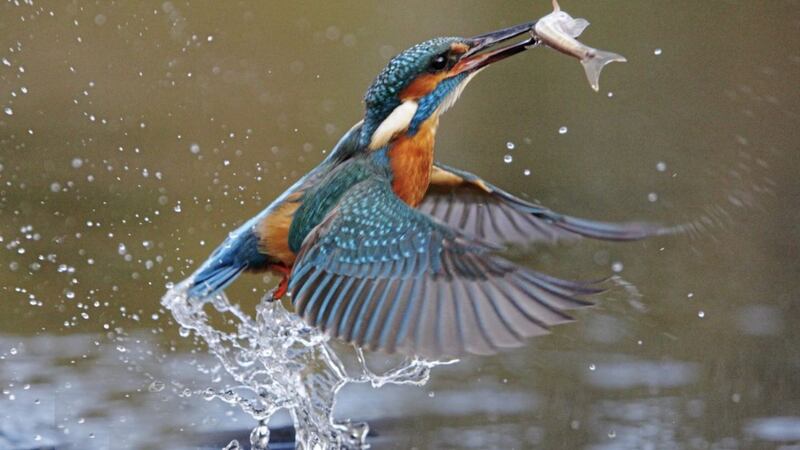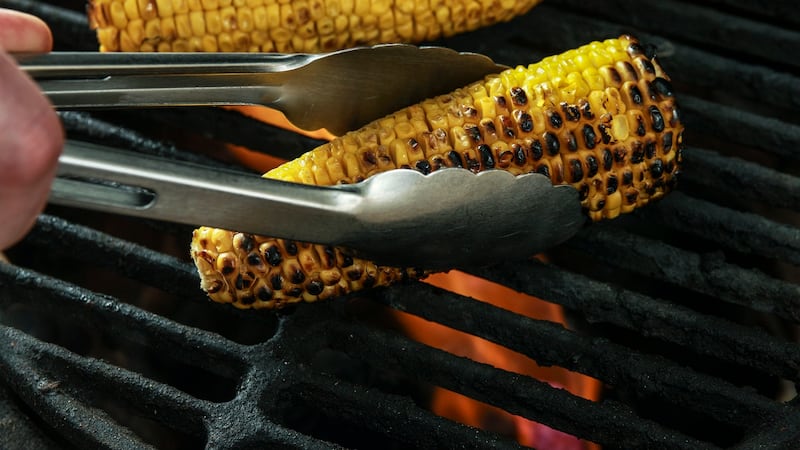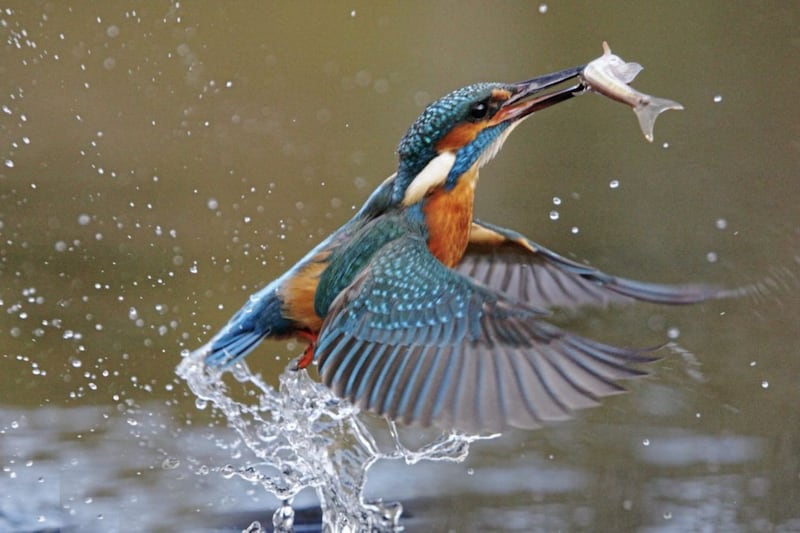LAST weekend as I ambled alongside the river which flows under the bridge through the town of Kesh (Ceis in Irish, meaning wicker bridge) Co Fermanagh, I saw the distinctive, azure blue of a flying Kingfisher, Alcedo atthis, fizzing rapidly across the slow moving water.
The brightly coloured plumage of its orange underparts, turquoise blue wings and electric blue back and rump were unmistakable. Such is the bird’s purity of colour that Welsh poet William Henry Davies wrote "It was the rainbow gave thee birth,/And left thee all her lovely hues" (The Kingfisher 1910).
The kingfisher must surely be one of Ireland’s most colourful birds. Favouring slow-moving, quiet streams, rivers and canals, the bird is found in all counties and enjoys a varied diet of small fish and larger aquatic insects which are caught by plunge diving from an overhanging branch or while hovering. Commonly known as cruidín in Irish, perhaps another of its Irish names, biorra an uisce (water spear), is more suitable, referring as it does to the bird’s dagger-sharp bill. Nesting in excavated tunnels in vertical riverbanks, kingfishers may have several broods in a good season.
According to the ancient Greeks, kingfishers built their nests on a raft of fish bones and, having laid their eggs, they set the nest afloat on the Mediterranean sea and incubated the eggs for seven days before and after the winter solstice.
In order to facilitate this it was said the gods always made sure that the seas and winds were calmed during this period. The Greek name for Kingfisher is halcyon, leading to the term ‘halcyon days’ which was originally a reference to the calm and fine weather at this time in Greece. We now use the term to refer to fondly remembered times in our past.
The name halcyon itself comes from the Greek goddess, Alcyone who was married to Ceyx. According to legend the couple were happily married but made the mistake of calling each other Zeus and Hera, which angered the real god Zeus who in bad temper killed Ceyx by sinking his ship with a thunderbolt.
On hearing this, Alcyone, wrought with grief, threw herself into the sea and drowned. Out of compassion, however, the gods later changed them both into beautiful flashing blue halcyon birds named after her and recognised in the kingfisher’s scientific name of Alcedo, after Alcyone.
In Irish folklore it is said that dead kingfishers preserved in a dry place will never decay and if put among clothes and other articles, they will preserve them from moths and give them a pleasant odour. Another old folk tradition in Ireland and Britain describes how a dead kingfisher hung by a thread from a post will always have its beak pointing in the direction of the prevailing wind. Shakespeare refers to this in King Lear, writing:
Bring oil to the fire, snow to their colder moods;
Renege, affirm, and turn their halcyon beaks
With every gale and vary of their masters
A kingfisher, said to be the first bird to fly from Noah’s ark after the deluge, supposedly received the orange of the setting sun on its breast and the blue of the sky on its back. It was considered a symbol of peace, promising prosperity and love.
Watching this ‘halcyon’ bird dart across the river reminded me of the words of Gerard Manley Hopkins when he wrote of how kingfishers "catch fire" in the bright spring sunshine. Along with the simple sweet notes of the recently returned chiffchaff, spring is here.







